By Christine Holecek
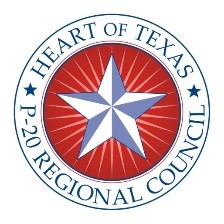 Preparing local students for a successful journey through school and college to careers is critical to the well-being and growth of our community. The Heart Of Texas P-20 works to promote streamlined, transparent degree pathways for students to move quickly and successfully through their education and onto college and/or a career. The Heart of Texas (HOT) P-20 brings together representatives from the independent school districts (ISD), institutions of higher education (IHE), Region 12 Education Service Center, industry and government across six counties: Bosque, Hill, Falls, Limestone, Freestone and McLennan to work towards this goal.
Preparing local students for a successful journey through school and college to careers is critical to the well-being and growth of our community. The Heart Of Texas P-20 works to promote streamlined, transparent degree pathways for students to move quickly and successfully through their education and onto college and/or a career. The Heart of Texas (HOT) P-20 brings together representatives from the independent school districts (ISD), institutions of higher education (IHE), Region 12 Education Service Center, industry and government across six counties: Bosque, Hill, Falls, Limestone, Freestone and McLennan to work towards this goal.
The HOT P-20 mission can best be summarized as follows:
- Collaborating by building cross-community team to address education and career possibilities for all students.
- Informing our diverse communities about ongoing initiatives, best practices and available resources.
- Advocating for educational best practices with at the state and local levels.
Upcoming Activities include
Collaborating:
Heart of Texas P-20 Forum “State of Education Conference” (Session# 146917) – April 26, 2018 – 11:00 to 2:00 – Education Service Center Region 12
Informing:
A look at SAT from a Math Perspective (Session #126532) – February 27, 2018 – 9:00 to – 4:00 – Education Service Center Region 12
21st Century New, Emerging, and Evolving Careers (Session #126482) March 1, 2018 – 9:00 to 12:00 – Education Service Center Region 12
CTE Quarterly Network Meeting (Session #126446) – April 26, 2018 – 9:00 to 11:00 – Education Service Center Region 12
Connect3 Conference – June 6-8, 2018 – ESC Region 12
Counselor Summer Fly-In – June 11-15, 2018 – MCC/TSTC
Advocating (Student Events):
Construction and Welding Expo “Build Your Future” – March 23, 2018 – 8:00 to 3:30 – Greater Waco Advanced Manufacturing Academy
YES! Expo – May 15, 2018 – 8:00 to 4:00 – Extraco Events Center
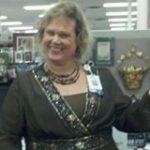 This Act Locally Waco blog post was written by Christine Holecek. Christine is an Education Specialist at Education Service Center Region 12 in Waco. She has worked in the area of Adult Education and Career & Technical Education for the past 25 years. She earned an AAS degree from MCC, a BAAS and Master’s Degree from the University of North Texas and is currently enrolled in the Doctoral Program in Educational Leadership and Policy Studies at Tarleton State University.
This Act Locally Waco blog post was written by Christine Holecek. Christine is an Education Specialist at Education Service Center Region 12 in Waco. She has worked in the area of Adult Education and Career & Technical Education for the past 25 years. She earned an AAS degree from MCC, a BAAS and Master’s Degree from the University of North Texas and is currently enrolled in the Doctoral Program in Educational Leadership and Policy Studies at Tarleton State University.
The Act Locally Waco blog publishes posts with a connection to these aspirations for Waco. If you are interested in writing for the Act Locally Waco Blog, please email ashleyt@actlocallywaco.org for more information.
Read Locally Waco is a project to promote literacy in Waco. Throughout the semester we will post stories that use sight words our children are learning in Waco ISD. You can print these stories and lists of words to use with your children or with other children in your life. This week’s story uses words from the First Grade Sight Word List. For a printable version of this story and word list, click here: Don’t eat me, Monster.
Don’t eat me, Monster!
What was that sound? I heard it again!
I think it’s a monster – please don’t let him in!
I know I am little and look very sweet,
But please, Mr. Monster, I’m not good to eat.
I come from a town where the kids all taste bad.
Don’t eat me! Don’t eat me! If you do, you’ll be sad.
I’m yucky and greasy and covered with fuzz.
Who tastes better than me? Almost everyone does!
I’ll make a burrito out of big brother, Zack.
When I add a few chips, he will make a good snack.
I’ll give you a tip, because you’re my good buddy…
My sister tastes good. She’s crunchy and nutty.
If I were you, Monster, I’d go for a pizza.
Or maybe some nachos topped with old Aunt DeLisa.
I didn’t bathe. My breath really stinks.
You could eat Uncle Tony. He smells like hot links!
DON’T EAT ME, MONSTER! I TASTE LIKE GREEN SLIME!
Oh… Hi, Momma and Daddy…I saw you the whole time…
First Grade Sight Words Used in this Story
- was
- what
- didn’t
- don’t
- eat
- from
- give
- good
- make
- of
- out
- saw
- were
- when
- again
- because
- could
- does
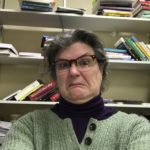 This Act Locally Waco blog post is by Ashley Bean Thornton, she has lived in Waco almost 20 years now. Far longer than she ever lived anywhere else. She likes to walk. If you see her out walking, honk and wave and say “hi!”
This Act Locally Waco blog post is by Ashley Bean Thornton, she has lived in Waco almost 20 years now. Far longer than she ever lived anywhere else. She likes to walk. If you see her out walking, honk and wave and say “hi!”
The Act Locally Waco blog publishes posts with a connection to these aspirations for Waco. If you are interested in writing for the Act Locally Waco Blog, please email ashleyt@actlocallywaco.org for more information.
By LuAnn Jennings
I’m a theatre director, and recently I was talking with an actor who was suffering from stage fright. This actor is a person of faith, as am I, and I said something like this: Sometimes people will suggest combating stage fright by imagining the audience in some non-threatening way. But I suggest the opposite. If we think about the audience as people God has given to us to love and serve, then we can be eager to share what we’ve created even at the risk of failure and embarrassment.
People of Judeo-Christian faith are told in our scriptures that our job is to love others as God loves us. It makes sense that God would uniquely craft each of us with abilities to do the thing that God tells us to do. Artists are created with skills to make works of art.
So, in this month of February when we celebrate love, I want to use a well-known system of thinking about the expression and receipt of love, Gary Chapman’s Five Love Languages, to unpack how artists love through creating.
Words of Affirmation: When an artist expresses something in a painting, dance, story, or song that you relate to, and then shapes your experience into something beautiful, the artist validates and affirms you. “Beautiful” isn’t the same as “pretty” – sometimes the artist’s job is to find and communicate meaning in things that are anything but pretty. Remember that sad song you couldn’t stop listening to in high school? Didn’t it make things seem better and more bearable somehow?
Quality time: Art takes a great deal of time to create. When I direct plays, I try to plan an hour of rehearsal for every minute that you see onstage. That doesn’t include the time that goes into costumes, lights, scenery, and more. Great musicians and dancers practice daily. You might think a painting looks like the artist created it quickly, but there were many sketches and plans that happened first. In return, you give the artist quality time as you engage with the work she created for you.
Giving Gifts and Acts of Service: Artists don’t do it for the money. In most cases your purchase of an artwork doesn’t begin to pay for the time it took the artist to learn to do it, prepare it, and present it to you. Art isn’t free to create – artists have materials costs and they’re taking time from other paying work to create art. They may need you to share in the cost. Think of it this way: if you brought me a sack of groceries and I used it to make you a truly amazing meal, the meal is a gift and act of service to you which is far more valuable than the materials I started with.
Physical touch: If you’ve ever been to a great museum and seen a painting in-person that you’d seen photos of before, you know that experiencing the real, physical work of art in a special place made for it is entirely different than seeing it in a book or online. It’s the “physical touch” of the artist. Live, local arts experiences require presence. Receive your neighbor’s creative gift of love to you in the way he made it for you. Go to galleries, plays, and concerts as well as experiencing art that was recorded so you could engage with it on your own terms (TV, iTunes, etc.).
If you want to share an expression of love with someone special, check out all of our live, local opportunities here in Waco! Visit Creative Waco’s Creative Directory for suggestions on venues and check out our many local arts calendars.
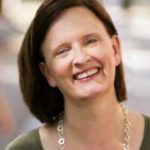 Luann Jennings is a local theatre director, arts educator, and advocate. She juggles several part-time arts-related jobs including projects at Creative Waco, the Good Neighbor Settlement House, and Waco Civic Theatre, where you can also see her upcoming production of The Three Musketeers. You can reach Luann at luannpjennings@gmail.com.
Luann Jennings is a local theatre director, arts educator, and advocate. She juggles several part-time arts-related jobs including projects at Creative Waco, the Good Neighbor Settlement House, and Waco Civic Theatre, where you can also see her upcoming production of The Three Musketeers. You can reach Luann at luannpjennings@gmail.com.
The Act Locally Waco blog publishes posts with a connection to these aspirations for Waco. If you are interested in writing for the Act Locally Waco Blog, please email ashleyt@actlocallywaco.org for more information.
(During these last few weeks of December we will be reprising the Top 10 Most Opened Blog Posts for 2018 from the Act Locally Waco blog. I couldn’t possibly pick my favorites – so I used the simple (cop out?) approach of pulling up the 10 blog posts that got the most “opens” according to our Google Analytics. It is an intriguing collection that gives at least a little insight into the interests and concerns of Act Locally Waco readers. I hope this “Top 10” idea inspires you to go back and re-read your personal favorites. There have been so many terrific ones… If you would like to see the Top 10 according to Google Analytics, here’s the link: Top 10 Most Opened Blog Posts of 2018. Merry Christmas! — ABT)
By Christy Perkins
The Community Health Worker Initiative is an innovative program designed to bridge the gap between the community and available resources. The program methodically targets 4 zip codes in Waco that could benefit from these resources: 76704, 76705,76706, and 76707. As Community Health Workers (CHW) we are trained to respond to cultural diversity with understanding and acceptance to help clients overcome barriers to using the available health resources. Our role is to connect clients to resources and help them navigate the healthcare system. By doing so, we help individuals reach a state of self-sufficiency to create a healthy and thriving community. We aim to build trusting relationships with our clients, to increase basic and critical health education that will develop confidence in those facing adversity, and to decrease unnecessary emergency (E.R) visits.
In 2016, I began purposefully researching and embedding myself into organizations and projects that are geared toward advocacy and health. I became passionate about client advocacy after personal life experiences left me in the dark about such services. When my oldest son fell ill as an infant, I didn’t know that patient advocates were available to help me manage this uncertain and scary time in my life. No one stepped in to advocate on our behalf by making me aware of available services that could support my son. That is when I became prayerful and intentional in regard to advocacy and awareness. I grew interested in holistic methods of health during that time and now find myself on the path to become more educated in this area. I saw this opportunity with the Waco-McLennan County Public Health District as a foot in the door to professionally connect to, advocate for, and educate individuals who have been left in the dark like I once was. I aspire to be a voice for those who feel their voice has been silenced.
In preparing to become a CHW, my coworkers and I underwent 160-hours of training over the course of 4 months to become certified by the Texas Department of Human Services (TDHS). The training covered 8 core competencies: communication, interpersonal, service coordination, capacity building, advocacy, teaching, organizational, and knowledge base skills. During training, we began attending coalition meetings, community meetings that were open to the public, toured facilities of community organizations, and had several guest speakers who assist the community explain their services. Additionally, I’m an active participant in Leadership Plenty, Round 7, which builds skills in community leadership, managing conflict, diversity, and taking action. The CHW training together with the leadership training are important tools when working with clients and partners.
Now that my fellow CHW’s and I have completed our training, we are preparing our first project! We will be hosting launch parties in the 4 zip codes that are the focus of this program. This will be an opportunity for the community to become familiar with the CHW’s assigned to their neighborhoods as well as enjoy the festivities that we and our community partners will have available to the families. Check out our new Facebook page — McLennan County Community Health Worker Initiative — for updates on these events!
I am truly looking forward to helping my CHW team in piloting this program. I feel the beauty of this program is that we are able to meet our clients where they are in their current life situation and create an action plan that is attainable within our capacity. My hope is to assist them with self-reliance when developing goals they desire to achieve and that will be beneficial to their well-being. In turn, creating a partnership with those clients to assure them I am dedicated to their personal successes. I will strive to access integrative resources on their behalf while preparing them to confidently do so independently. My personal goal is to specialize in nutrition and help guide others in holistic lifestyle choices to improve their quality of life.
I look forward to continuing to build relationships with community partners to tackle the problems of our community by collecting information at the grassroots level that will support and develop this program. We will be working closely with the healthcare system in Waco to assure that this program is effectively aiding the community.
I’m looking forward to working with my fellow CHW’s in beginning walking groups within the communities we are serving. This is an example of the kinds of efforts that will help us connect with fellow residents and encourage healthy lifestyle routines. This is an exciting time for us as we embark on a mission that will shape a program that has been conjured up through discussion, data development, and planning for years. What an honor it is to be entrusted as the charter group to thrust this project into a flourishing program!
 Christy Perkins is a certified Community Health Worker for zip code 76707. She currently serving on the Garden Committee at Brook Avenue Elementary. She is looking forward to becoming a graduate of the prestigious leadership training with the Leadership Plenty Institute in March of 2018 and serving on the YMCA, Young Junior Professionals Board. When she isn’t involved in community work, she is a Mother of 3 handsome boys. They keep her life busy and entertaining. She has a passion for writing, reading, and fellowship. She is originally from Amarillo, Tx but has grown to love Waco, Tx and is looking forward to building a future here. You can reach her at cperkins.chw@gmail.com or on Facebook at McLennan County Community Health Worker.
Christy Perkins is a certified Community Health Worker for zip code 76707. She currently serving on the Garden Committee at Brook Avenue Elementary. She is looking forward to becoming a graduate of the prestigious leadership training with the Leadership Plenty Institute in March of 2018 and serving on the YMCA, Young Junior Professionals Board. When she isn’t involved in community work, she is a Mother of 3 handsome boys. They keep her life busy and entertaining. She has a passion for writing, reading, and fellowship. She is originally from Amarillo, Tx but has grown to love Waco, Tx and is looking forward to building a future here. You can reach her at cperkins.chw@gmail.com or on Facebook at McLennan County Community Health Worker.
The Act Locally Waco blog publishes posts with a connection to these aspirations for Waco. If you are interested in writing for the Act Locally Waco Blog, please email ashleyt@actlocallywaco.org for more information.
(For the other parts of this series, click here: Gardening Waco. — ALW)
By Aime Sommerfeld Lillard
I’ve gone back and forth about the best way to talk about the benefits gardening provides. I’m sure some people would like a well-crafted research study that demonstrates statistically positive results of gardening. Others would prefer a simple story.
I will try to combine the two a bit while relying heavily on my personal experiences. My degree says “Horticulture”, but that doesn’t clearly define my field of study. Other names one may use are sociohorticulture, people-plant interactions, and horticultural therapy (which is really its own branch of therapy).
Through many conversations about gardening I have learned that for most people it seems the garden itself, whether it is a community or school garden, is seen as the end-product. I would prefer the garden be seen as a location for a multitude of interactions. These interactions can be between individuals and plants, or between people. Have you noticed that the weather is a pretty safe topic of conversation? A garden will function similarly if individuals are given some basic exposure to growing or green spaces.
I will start with my experience installing a garden at a Montessori preschool that served kiddos infant to 5 years and a few older ones in an after-school group. I was looking at visual motor integration and delay of gratification with pre and post testing measures from ages 2.5 years up. I was working with a range of children from different socioeconomic levels, ethnicities, and various upbringings.
My first big “Oh my” moment came after we had our family engagement day to build the garden and I had done a couple of inside lessons. We were ready to start working in the garden. I knew I could only handle 3-5 kids at a time due to their age. The garden was fenced and adjacent to the playground area. My idea was to go down the roster and have the kids come in as class groups. By the time I had things set up in the garden and turned around there was a line of kids waiting by the gate at the fence. And by “line of kids” I mean practically everyone on the playground was crowded around the fence.
Cue the delay of gratification practice. Here I thought it was going to come from seed germination, plant growth, and waiting for harvest. Well, it came a lot quicker than that! Pretty much immediately I had kids crying because they didn’t get to go in the first group, or the second. I admit, standing in the garden watching little kids bawl on the other side of the fence because they wanted to come garden was not what I had prepared for!
With the teachers help we created a system so that those who wanted to garden sat at a designated spot in a line until it was their turn. I kid you not, there were kids who would leave playtime to come sit at the end of the line and wait for 10 minutes to go in the garden and cut three leaves off of a collards plant. Color me impressed.
I briefly want to mention a couple of other experiences during that project. There were two little boys who were high energy and had difficulty focusing in a classroom setting. I was a little worried about having them in the garden, but they were no different than the other kids. One day, we were transplanting, and I set one of the boys to work on that job. He was supposed to plant about 5 plants out of the tray of 35. Forty-five minutes later he finished all the plants. Did I need them all done? No. Did his “turn” in the garden end before that? Sure. However, I just let him work while I cleaned up and his teachers let him stay outside to finish his work. At the end of the day we got to see his pride as he and the teachers brought his mom out to see his work. Was it worth my extra time and flexibility of schedule? No question.
Another time a little girl transferred to the school who didn’t speak (much) English. She wouldn’t go into the room to be tested with me for our pre-test measures, but she waited with everyone else to work with me in the garden. It was easy to see that the garden was comfortable for her, she could point, dig, plant, and harvest just as well as anyone else. Here was a place she could gain confidence, be herself, and not deal with barriers she experienced in the classroom.
One of my favorite memories when I was working in a long-term care facility was cleaning up after a planting project. Ladies came out with their walkers, air pumps, and wheelchairs to watch and participate. When I was putting things away after the project, I turned around and encountered a walker pushed up against the wall outside. Turns out carrying a plant to your room can be more important than taking your walker. This still warms my heart, knowing that for that time, her focus was clearly on something else. A hope for life, for growth, for an experience.
What I ask you to consider after reading this is how the garden offered a setting for these encounters. It was not gardening itself, or the physical labor. Simply by being there, and being available, the garden is a place where growth and experiences can happen. A garden provides the potential for growing pride, growing food, growing communication, and growing community.
 Dr. Aime Sommerfeld Lillard has cultivated a love for nature and gardening through multiple outlets. Dr. Lillard is a Texas A&M graduate with a B.S. in Agricultural Leadership and Development and an M.S. and Ph.D. in Horticulture with a focus on human issues in horticulture. Currently, Dr. Lillard contracts with the Urban Gardening Coalition (UGC) for the Waco Health District’s Farmers Market Promotion Program Grant. She works in the Waco area through the vision of UGC to “strengthen local food production, improve access to healthy food, and empower folks to “grow their own” by creating a coalition that can impact a variety of horticultural education and grow through strategic partnerships.
Dr. Aime Sommerfeld Lillard has cultivated a love for nature and gardening through multiple outlets. Dr. Lillard is a Texas A&M graduate with a B.S. in Agricultural Leadership and Development and an M.S. and Ph.D. in Horticulture with a focus on human issues in horticulture. Currently, Dr. Lillard contracts with the Urban Gardening Coalition (UGC) for the Waco Health District’s Farmers Market Promotion Program Grant. She works in the Waco area through the vision of UGC to “strengthen local food production, improve access to healthy food, and empower folks to “grow their own” by creating a coalition that can impact a variety of horticultural education and grow through strategic partnerships.
By Madiha Kark
Young men of color face challenges every day; they strive to be seen beyond their stereotypical portrayal as depicted by news media and pop culture. Especially in higher education, their representation is small, and completion rates have been historically low. At McLennan Community College, the Men of Color Success Initiative focuses on engaging in individual and group mentoring to address challenges for first-generation students, traditionally underrepresented groups, and students in need of academic and personal direction.
The goal of the program is to increase higher-education completion rates among men of color while raising awareness of issues with diversity and equity, and creating awareness of support services available. The initiative is modeled after similar programs at other colleges in Texas, and representatives are working closely with the Texas Education Consortium for Male Students of Color to grow its efforts.
According to a study by the Center for Community College Student Engagement (CCCSE), titled Aspirations to Achievement: Men of Color and Community Colleges, “Consistently and unmistakably, data show a persistent gap separating Latinos and Black males from other student groups on measures of academic progress and college completion. These gaps exist across higher education.”
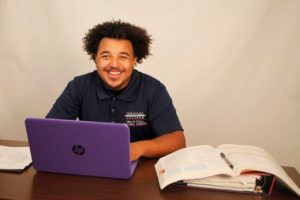 Barron Lowe, who graduated recently with an associate degree in communications, said before he found the initiative, he was going through personal issues and wasn’t sure where he was headed in life. A trip to Austin to attend a seminar for the Men of Color made him realize he wasn’t the only one with problems.
Barron Lowe, who graduated recently with an associate degree in communications, said before he found the initiative, he was going through personal issues and wasn’t sure where he was headed in life. A trip to Austin to attend a seminar for the Men of Color made him realize he wasn’t the only one with problems.
The program pairs faculty members and mentors with students to help them achieve personal and academic goals. The idea is to be accountable and push each other to better ourselves. Lowe says the networking opportunities he has had because of the initiative helped him to reach the next level in his life. He is currently working as a leasing agent for a community center but wants to get a bachelor’s degree from Texas A&M. “I’ve met some of the most amazing men through this, and they’ve helped me be the best version of myself.”
Building networks and relationships is a big part of the initiative, and one that allows the group members to make stronger ties, because everyone is invested in the common goal.
“It gave me the opportunity to have a professor who was good one-on-one and really caring, and saw I had the potential to be a better student,” Lowe said. “He basically took me under his wing, and it’s been like this ever since: close.”
At a time when one might feel like they’re taking on the world alone, college can be daunting, he said. Lowe had to learn how to ask for help when necessary, something he couldn’t bring himself to do before MCC, he said.
Click here and learn how you can be a part of the Men of Color Success Initiative at MCC.
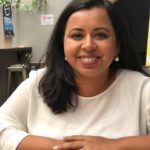 Madiha Kark is a Marketing, Communications and Photography Specialist at McLennan Community College. She holds an M.A. in Journalism from the University of North Texas. She loves to travel, cook, and read nonfiction books.
Madiha Kark is a Marketing, Communications and Photography Specialist at McLennan Community College. She holds an M.A. in Journalism from the University of North Texas. She loves to travel, cook, and read nonfiction books.
The Act Locally Waco blog publishes posts with a connection to these aspirations for Waco. If you are interested in writing for the Act Locally Waco Blog, please email ashleyt@actlocallywaco.org for more information.
By Christina Helmick
Did you know that preparing your child for school starts before they even enter the classroom? School readiness is an essential part of the development of a child before, after, and during their years in school. A child’s success is a parent’s success, and there are many free resources to support the school readiness journey! Here are two free resources for you to check out:
 Vroom is a free, bilingual tool that utilizes daily brain building activities that can be incorporated into a family’s daily routine. Activities are based on the child’s age and focus on parent-child engagement. Vroom, an initiative of the Bezos Family Foundation, was developed by a group of dedicated scientists, community leaders and trusted brands with input from community organizations and families like yours. Vroom is providing parents and caregivers with activities to boost early learning.
Vroom is a free, bilingual tool that utilizes daily brain building activities that can be incorporated into a family’s daily routine. Activities are based on the child’s age and focus on parent-child engagement. Vroom, an initiative of the Bezos Family Foundation, was developed by a group of dedicated scientists, community leaders and trusted brands with input from community organizations and families like yours. Vroom is providing parents and caregivers with activities to boost early learning.
 Literacy Kits are another great resource for both parents and children. Waco ISD early childhood experts worked with the library’s staff to make sure the items included are items that will help a child become school ready. These kits can be checked out for up to 21 days. The Literacy Kits are funded by Waco Rotary Club and are available at all Waco-McLennan County libraries.
Literacy Kits are another great resource for both parents and children. Waco ISD early childhood experts worked with the library’s staff to make sure the items included are items that will help a child become school ready. These kits can be checked out for up to 21 days. The Literacy Kits are funded by Waco Rotary Club and are available at all Waco-McLennan County libraries.
The School Readiness Working Group includes more than 20 organizations across the community that are committed to improving school readiness outcomes. This Working Group meets each month to talk about aligning activities and reviews best practices to bring into the Waco community to make sure all students entering school are prepared for success. If you’d like to join this group, send an email to Jillian (jillian@prosperwaco.org) today!
The Working Group looks at data each meeting to make sure the strategies the group implements are addressing the outcomes the community agreed upon. In the 2016-2017 school year, 60% of students entering Kindergarten in Waco ISD were ready to learn, compared to 59% across the state. Even more impressive is that in Waco ISD if the kindergartners attended a Texas Public ISD, they were 11% more prepared for school than the state average.
Beyond promoting free resources like Vroom and the Literacy Kits, early childhood leaders in our community have developed a list of 10 important activities to do with your child to encourage school readiness! Here they are:
- Read to your child every day
- Have purposeful conversation
- Play, Talk, Read!
- Explore through movement and play
- Count, Group, Compare
- Create a routine, such as bedtime or bath time
- Take turns and share
- Make and give choices
- Limit access to technology
- Create opportunities to be helpful, such as allowing your child to help wash dishes
Whether you’re a parent, aunt, uncle, grandmother, grandfather, cousin, caregiver, school teacher or a community member dedicated to making sure generations to come are successful in school, it is important to get involved and share activities about school readiness!
Want to learn more about Vroom or the library’s literacy kits? Check out “The Work” page on the Prosper Waco website. If you’d like to engage with other parents and community leaders committed to making sure each child is prepared to enter school, join the School Readiness Working Group by sending an email to Jillian (jillian@prosperwaco.org).
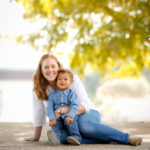 Christina is a graduate of Baylor University with a BA in Journalism, Public Relations & New Media and is currently pursuing a Masters of Business Administration through Tarleton State. She is originally from Washington, D.C., but is proud to call Waco her home. Christina sits on the Board of Directors for Waco Habitat for Humanity and serves as a community advisor for Junior League of Waco. She enjoys spending time with her family and watching Baylor football. Sic ’em Bears!
Christina is a graduate of Baylor University with a BA in Journalism, Public Relations & New Media and is currently pursuing a Masters of Business Administration through Tarleton State. She is originally from Washington, D.C., but is proud to call Waco her home. Christina sits on the Board of Directors for Waco Habitat for Humanity and serves as a community advisor for Junior League of Waco. She enjoys spending time with her family and watching Baylor football. Sic ’em Bears!
The Act Locally Waco blog publishes posts with a connection to these aspirations for Waco. If you are interested in writing for the Act Locally Waco Blog, please email ashleyt@actlocallywaco.org for more information.
By Rachel E. Pate
Located on the Quinn Campus in the heart of east Waco, Esther’s Closet promotes empowerment, education and provides a much-needed resource to the women of the city. Launched on March 29, 2016, Esther’s Closet is a self-sufficiency program that assists unemployed women in preparing for interviews and entering the workforce by providing no-cost, professional clothing. Esther’s Closet clients are suited with a complete head-to-toe professional look for job interviews and 7 to 10 days of outfits for new employment. Clients who maintain steady employment are eligible to receive two additional outfits quarterly. Workwear options include business professional attire, medical scrubs and restaurant/retail clothing. In addition to providing employment wear, the program also offers resume writing and job performance skills to help women. To date, the program has assisted 334 women and provided 1,069 outfits.
As the Esther’s Closet Coordinator, I have a great deal of interaction with our clients. Our program’s numbers are a testament to our impact in the community, however they do not reveal the many faces and testimonies of these wonderful women. Some are single, proud moms, sole providers, just starting out, ready to start over, coming back, building up, etc. I’ve shared in countless tearful moments with clients on my office sofa discussing the obstacles we have overcome and those we still face. I’ve calmed the nervousness in the dressing room while helping someone prepare for a job interview in less than 30 minutes. I even taught a client how to properly apply her makeup for the first time by doing a side-by-side tutorial in the mirror. Being able to give my sincerest service and watching others’ confidence bloom before my eyes is a blessing to behold.
My passion is helping every client uncover her business fierceness; the ability to see herself be anything and do anything. When clients visit our office for the first time, they’re never quite sure what to expect. When they’re greeted by our professional staff, given a tour and shown to our boutique, their anxiety seems to subside a bit and is replaced with awe and excitement.
Our racks are filled with fashionable finds that make the suiting experience an easy one to get into. I often take the time to act as a personal shopper; finding the right sizes, shades and shapes to flatter clients’ frames. From baubles and belts to skirts and scrubs, Esther’s Closet has everything to send our clients out of our doors feeling empowered to take on the work world. One client felt so great about her new outfit, she wore it out of our office to her interview and forgot her own clothes in our dressing room for a few days!
I often speak from my heart and share my own testimony with my clients. I can relate to what it’s like to search for a new opportunity in life, only to be met with socioeconomic setbacks and hardships. As a new mom, some time ago, I found myself walking through the doors of my first post-partum interview, and I had no idea how ill-prepared I was with my outfit. I wore a comfortable blouse with dark denim slacks and my lucky, leather Chuck Taylor’s… Most employers might’ve interviewed me and never called back, but fortunately this interviewer pointed out that I wasn’t very professionally dressed. That moment changed my perception. That sincere observation and audacious statement helped me realize the invaluable importance of dressing for a successful first business impression. I decided then that if the company ever called me back, I would most assuredly show them just how professional I could be. A little over a month I received a call back, and I seized my opportunity. That same interviewer was highly impressed with my charm, knowledge and experience. This was all while I was wearing a tailored black suit with pumps and carrying a briefcase. I’d discovered my own business fierce, and I landed the job.
There’s just something about helping one another that appeals to the very best parts of our nature. It gives you an outlet for love and an inlet for hope. Every day I walk through the doors of Esther’s Closet, I’m granted with yet another opportunity to see how empowering someone else makes me and the nature and soul of our community much more hopeful- one outfit at a time.
 Rachel E. Pate is a native Wacoan and University High School alum. She currently works as the Public Relations person for the Cen-Tex African American Chamber of Commerce and serves as Coordinator for the Esther’s Closet program for women. She’s also a proud mom of one, lifelong member of Toliver Chapel (TCMBC) Church, graduate of the LeadershipPlenty Institute, lover of the great outdoors, an avid basketball fan and a dedicated wearer of Converse’s Chuck Taylor shoes.
Rachel E. Pate is a native Wacoan and University High School alum. She currently works as the Public Relations person for the Cen-Tex African American Chamber of Commerce and serves as Coordinator for the Esther’s Closet program for women. She’s also a proud mom of one, lifelong member of Toliver Chapel (TCMBC) Church, graduate of the LeadershipPlenty Institute, lover of the great outdoors, an avid basketball fan and a dedicated wearer of Converse’s Chuck Taylor shoes.
The Act Locally Waco blog publishes posts with a connection to these aspirations for Waco. If you are interested in writing for the Act Locally Waco Blog, please email ashleyt@actlocallywaco.org for more information.
By Allison Abel

New construction at Legacy Square
I work at a local, non-profit organization called NeighborWorks Waco. Our primary mission is to build stronger neighborhoods. Developing affordable homes in neighborhoods that are good candidates for revitalization is one of our main programs. Our newest project is a small subdivision located on Hood and Turner streets in East Waco, across from East Waco Park. Four homes have already been built and are already occupied by wonderful homeowners. Four additional homes are currently under construction, and another four homes are planned for future development. We named this new subdivision, “Legacy Square.”
When we chose the name “Legacy Square,” we had no idea what a powerful legacy this little piece of land already represented. We chose the name “Legacy Square” for the legacy our clients wish to leave to their children. With the help of a little research, however, the name “Legacy Square” has taken on an additional rich level of meaning for us.
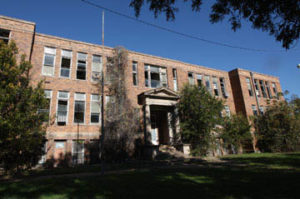
old R.L. Smith School building before it was torn down
Before Legacy Square was filled with smiling families and welcoming front porches… before the bricks, beams, and nails of construction… before the land was cleared, and even before the idea of a new housing addition was developed – it was the location of a dilapidated building: The R.L. Smith School. Some of our readers may remember this school. Some may have even personally attended R.L. Smith. This building, erected in 1913, went by different names and served the community in a variety of capacities over the last century.
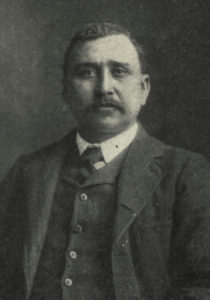
Robert Lloyd Smith
Our focus, though, is not on the school itself, but on its namesake – R.L. Smith. Unless you are a historian, you may not have heard this name. Once you hear a little more about this amazing man’s legacy, you’ll understand why we are so excited to share in this bit of history.
Robert Lloyd Smith was born in 1861 a free black man in Charleston, South Carolina. He was well-educated. He attended the public schools available in Charleston. Then he attended the University of South Carolina, planning to major in mathematics. However, during his time at USC, legislature closed the university to African-Americans. Smith transferred to Atlanta University, acquired a bachelor’s degree, and began a career of teaching.
Eventually, R. L. Smith left South Carolina for Oakland, Texas, a small cotton farming community about halfway between Houston and San Antonio. Smith quickly realized that a sizable African-American population lived in Oakland. He also discovered that only a small portion of this population owned their own homes and all were living with very few municipal services available to them.
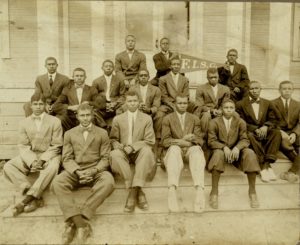
Group photo of the Farmers Improvement Society
After identifying this social issue, he went to work, seeking solutions for the African-Americans living in Texas. Eventually, he discovered an article entitled “Youth’s Companion.” The author presented a case study of how a self-improvement society in New England changed the lives of its participants. Smith thought to himself “how much more necessary [a self-improvement society] was for a people who had just come out of the house of bondage.” That same year, he established the Farmers Improvement Society.
Hopefully, we haven’t lost you in this story yet because you have just made it to the best part – the incredible change that ensued following the creation of Smith’s society. The Village Improvement Society began first with a goal of beautifying their homes and neighborhoods. In short, Smith singlehandedly created a group that would transform the “black side” of Oakland.
Roofs? Repaired.
Houses? Repainted.
Landscaping? Planted.
Fences? Rebuilt.
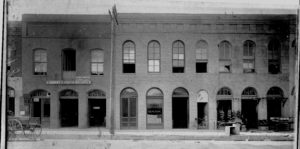
Farmer’s Improvement Bank on Bridge Street (Current location of the Waco Convention Center)
More than community beautification, though, Smith also established a school, a bank, and other services specifically for the African-American population. The Farmers’ Improvement Bank was right here in Waco – on Bridge Street, where the Convention Center now stands.
Smith strongly believed in and encouraged the philosophy of economic self-sufficiency, especially in the African-American community. He believed the greatest traits achievable were thrift, industry, and economy.
R.L. Smith’s legacy touched many people around the country. At its high point in 1911, the Farmers’ Improvement Society claimed 12,000 members in 800 branches across Texas, Oklahoma, and Arkansas. Although we only recently discovered the story of R.L. Smith, after we had already named Legacy Square, we are proud to carry on the legacy of this great and influential man.
Today, Smith’s legacy – one of growth and development – continues to flourish! NeighborWorks Waco strives toward many of the same principles R.L. Smith encouraged over 100 years ago – economic self-sufficiency, neighborhood beautification, and the growth of East Waco. Our hope is that through the development and construction of Legacy Square, the rehabilitation of houses in the area, and the spurring of economic development, NeighborWorks Waco is living into the legacy of Robert Lloyd Smith.
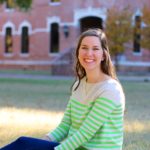 This Act Locally Waco blog post was written by Allison Abel. Allison is the Homeownership Center Manager at NeighborWorks Waco. She received her Bachelor’s degree in Child and Family Studies from Baylor University and is currently working on a Master’s in Public Administration. A Waco native, Allison enjoys life by connecting with family and friends, reading any novel she can find, and enjoying downtown Waco with her pup, Ollie.
This Act Locally Waco blog post was written by Allison Abel. Allison is the Homeownership Center Manager at NeighborWorks Waco. She received her Bachelor’s degree in Child and Family Studies from Baylor University and is currently working on a Master’s in Public Administration. A Waco native, Allison enjoys life by connecting with family and friends, reading any novel she can find, and enjoying downtown Waco with her pup, Ollie.
NeighborWorks Waco is not for profit organization focused on building stronger neighborhoods through homeownership, quality rental housing and community-building initiatives. NeighborWorks Waco’s vision is that through NeighborWorks Waco and its collaborations, the Central Texas area is filled with vibrant, thriving communities. Online: nw-waco.org
(This piece was first published on the Baylor School of Education blog “Instant Impact.” – ALW)
by Taylor Ward
Results from the first three years of the Baylor School of Education’s EnAbled for College program show that high-school students working with trained mentors are reaching the next level of education.
Research has proven that at-risk and disabled high school students are less likely to pursue a post-secondary education. And without that education, many continue to live below the poverty line.
The Baylor School of Education’s Department of Educational Psychology is working to change that with a grant from the AT&T Foundation. Through the EnAbled for College mentorship program, now in its fourth year, Baylor graduate students mentor high-school students in the greater Waco community.
EnAbled for College serves about 50 high schoolers each year, and 100 percent of the program participants who graduated in May 2017 applied to a post-secondary educational institution. Of those seniors who applied, 97 percent were accepted to college.
The project began in 2014, modeled after the AT&T Foundation Building a Grad Nation campaign. In its first three years, the EnAbled for College program served:
- 151 students in McLennan County in Central Texas
- 48 percent of those students had a disability,
- 71 percent were from low socioeconomic homes, and
- 74 percent were first generation students.
Baylor’s Dr. Tamara Hodges spearheads the project as a co-principal investigator for the AT&T grant. She is a senior lecturer in the Department of Educational Psychology, a licensed psychologist and a Licensed Specialist in School Psychology.
“These kids couldn’t see past high school,” Hodges said. “I think the crux and the heart of this program is watching people’s lives change — knowing the significant obstacles facing some of these kids and now knowing that they are in college? That’s success.”
During the program’s first three years, mentors were spread across six different high school campuses. For the 2017-2018 school year, the EnAbled for College program is focused on two local high schools in McGregor ISD and Waco ISD.
The program seeks to serve:
- Low-Income Students
- Minority Students
- Students with Disabilities
- English Language Learners
- Low-Graduation-Rate High Schools
Dr. Terrill Saxon, Interim Dean for the School of Education, is co-principal investigator and has worked with EnAbled for College since its inception.
“These kids are viewed by their teachers, principals and counselors as having great academic potential, but they need additional resources in order to make their post-secondary dreams a reality,” Saxon said. “It has been a wonderful experience seeing it grow into a project that directly benefits local high-school students.”
Mentors are the heart of the program because of the relationships they build with their students. Each mentor works with 10 to 20 students, and they meet with them in one-on-one sessions as well as in group settings at least once a week. They discuss everything from how to fill out a college application to how to deal with the Free Application for Federal Student Aid (FAFSA).
“Like many of the students I mentor, I didn’t have the available resources to guide me toward pursuing post-secondary education,” said student mentor Crystal Posada, a master’s student in Educational Psychology. “As a first-generation student, I was clueless about college and everything it had to offer. I am excited to be that someone for these students and help them see a future past their high school graduation.”
The mentors benefit from the EnAbled for College program as well. Through the AT&T grant program, 22 graduate students in the Department of Educational Psychology have worked as mentors.
“Mentoring has highlighted the challenges that many of my students face, but it has also shown me just how capable, motivated and deserving they are,” said mentor Jacy Latta, a graduate student pursuing an Educational Specialist degree in School Psychology. “Walking alongside them as they prepare for their future has changed my life, and hopefully it’s empowering them to be seekers of positive change for themselves and for their communities.”
And Dr. Hodges is determined to see the success of the program.
“The way out of poverty is through education,” she said.
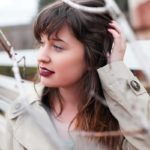 Taylor Ward is a senior journalism, public relations major at Baylor University. Taylor is a United States Air Force military brat and has lived in six different places while growing up until her father retired to Cibolo, TX where she graduated high school.
Taylor Ward is a senior journalism, public relations major at Baylor University. Taylor is a United States Air Force military brat and has lived in six different places while growing up until her father retired to Cibolo, TX where she graduated high school.
